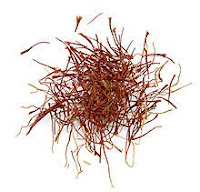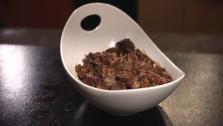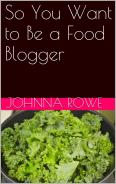
This is the month of Spanish food. We are officially declaring it…well, not exactly, but we do have an intoxicating urge for dishes full of saffron, thyme and rosemary. This week’s Travel Dream to Spain focuses on the flavors that you should have in your cabinet to make most Spanish dishes. When you think Spain you think paella which is a fair food association. You honestly have not have paella until you have actually traveled to Spain. Now there are definitely places in the States that meet the requirements but it’s something about the way it’s made in its native surroundings that beguiles the senses. Maybe it’s the placebo effect…we don’t know, but its good!
For your cooking pleasure and to remind you of time you spent in Spain, planning to spend or just for daydreaming purposes, here are a list of ingredients that should be included:
Bread– This is the base of many Spanish tapas. Bread is necessary to round out the meal or rather small meal. Baguettes are the most popular types of bread for a Spanish style meal.
Tomatoes– Now we understand there are people out there who don’t eat tomatoes but for those that do, this is a must. Now during these winter months, tomatoes are out of season so the canned stuff will have to do.
Saffron– Imagine paella without saffron?? You’re doomed from the beginning. Now we are believers in there are multiple routes to one goal and in this case that would be to create the perfect paella…if you can do this without saffron, please school us.
Spanish wine– Wine is one our favorite tools in the kitchen. It adds an alternative to simmering, deglazing and bringing flavor to a dish. The Spanish have mastered this addition in many of the signature dishes such as Estofado (*Spanish beef and potato stew) and Paella Valenciana.
You could just take a cheap flight to Barcelona and try the real deal or for $20 bucks bring Spain to your kitchen. With our budget (*or until we come across a cheap ticket), we think we’ll go with the latter. Ole!
Category: Travels, World Tour

Johnna French is a Harlem NY native with deep roots in Panama, Washington, DC and North Carolina. All four places have heavily influenced her life and the foods she loves today. After graduating Howard University School of Law and beginning her life as a young professional in the city she was led to start Johnna Knows Good Food in November 2007 to keep family, friends and colleagues updated on where to go and what to eat while dining in the nation’s capitol. French, who still practices law, leads a team of three writers to cover the ever expanding Washington, DC food scene. French has been featured in print and television, appearing in Washingtonian Magazine and is a regular contributor to various local TV affiliates including WUSA 9, FOX 5 DC and WJLA (ABC Affiliate) News Channel 8. During the 2016-2017 football season, Johnna aired on Comcast Sports Mid-Atlantic (CSN) show, Redskins Life, as the weekly tailgate host. Johnna is currently a regular contributor to the FOX Baltimore Weekend morning show.











Yes the Mediterranean Diet is healthy, the French Diet is healthy, leading to the "French Paradox", the Inuit Eskimo diet consisting of large amounts of seal blubber rather than leading to heart attacks by age 40 is rich in omega 3 fatty acids and is healthy. All of these are traditional diets. Weston Price in the 1940s went around the world and documented the health benefits of geographically varied traditional diets as opposed to modern, Western, developed diets. The key finding is the diets all actually consist of food as opposed to aspartame and yellow dye #3.
There’s an interesting post over at the Health Journal Club that makes the case that people should just not eat anything that wasn’t a food 100 years ago. Gets rid of the aspartame, bleached GM flour, high fructose corn syrup garbage they try to pass off as food these days. If interested you can read on it here,
http://healthjournalclub.blogspot.com/
Thank you for the info!!
Thank you for the info!!
Thank you for the info!!